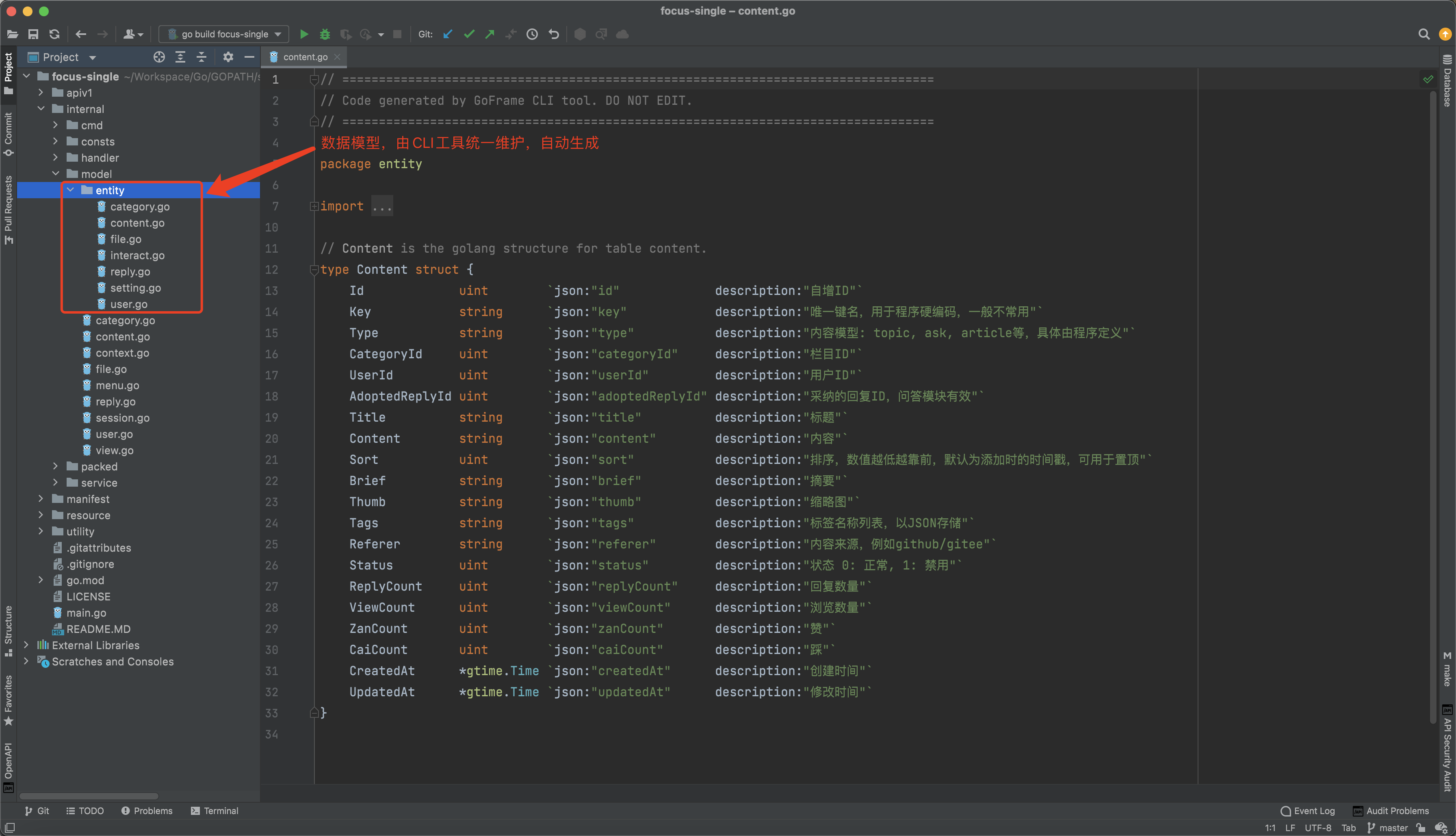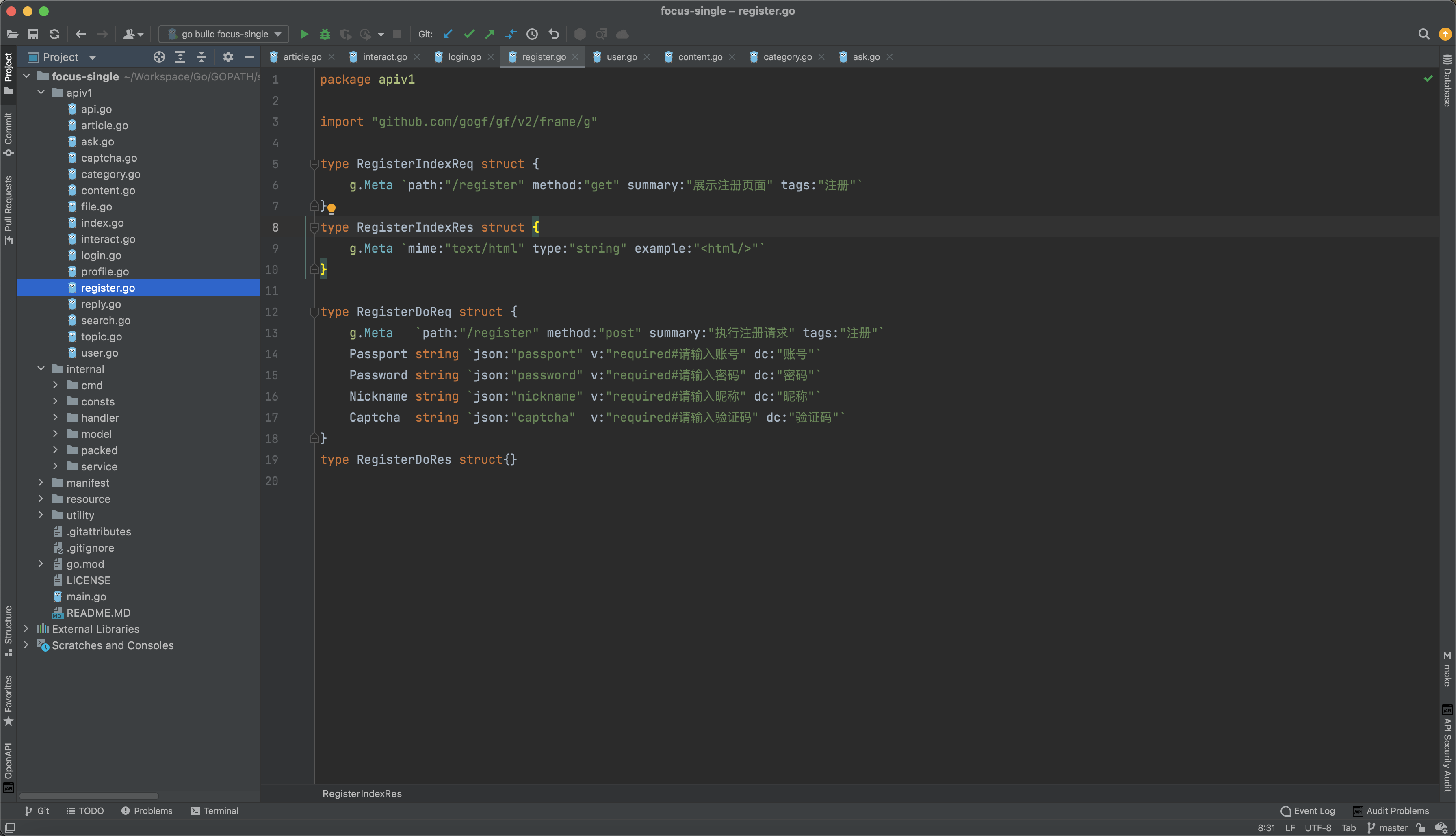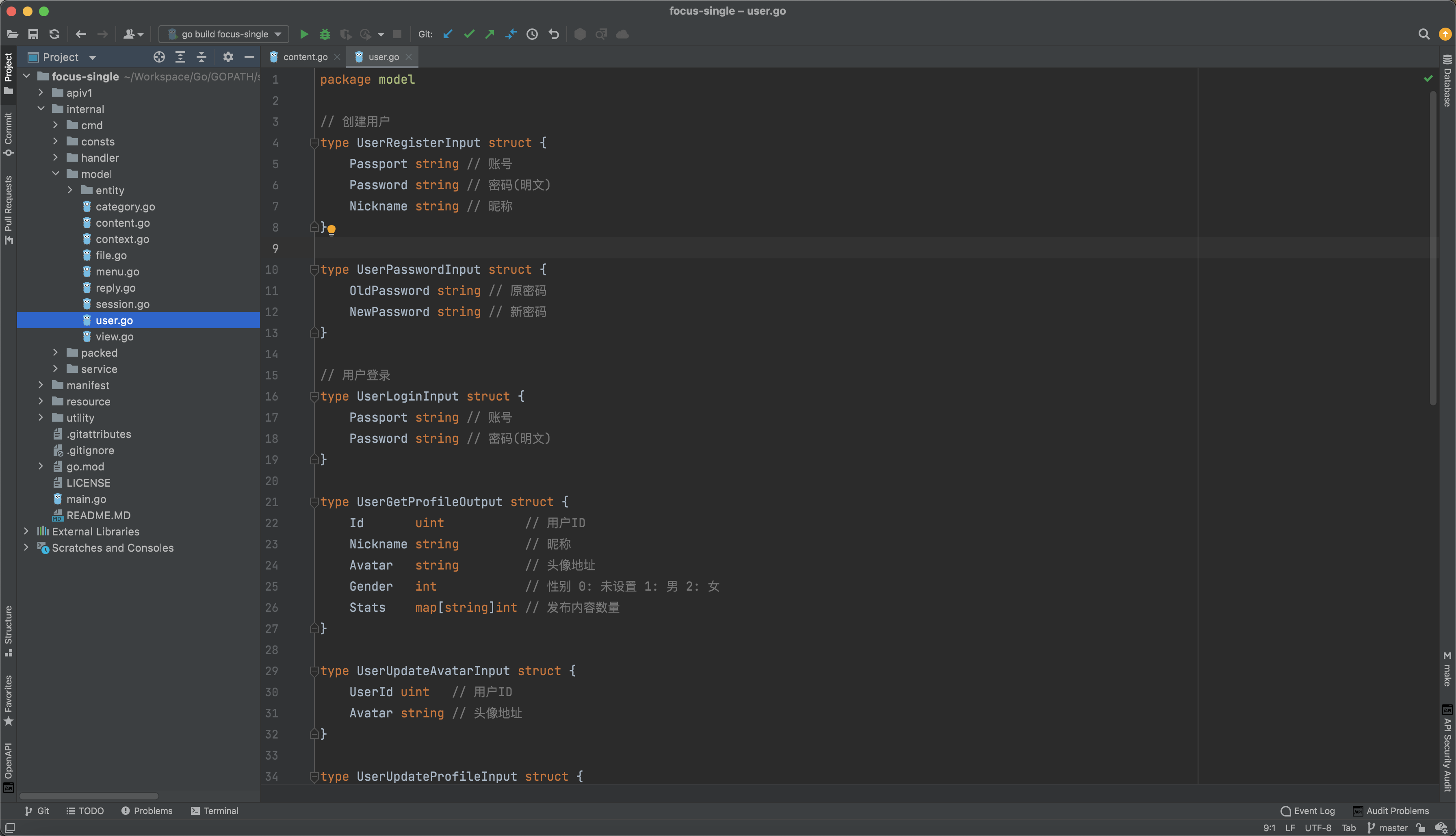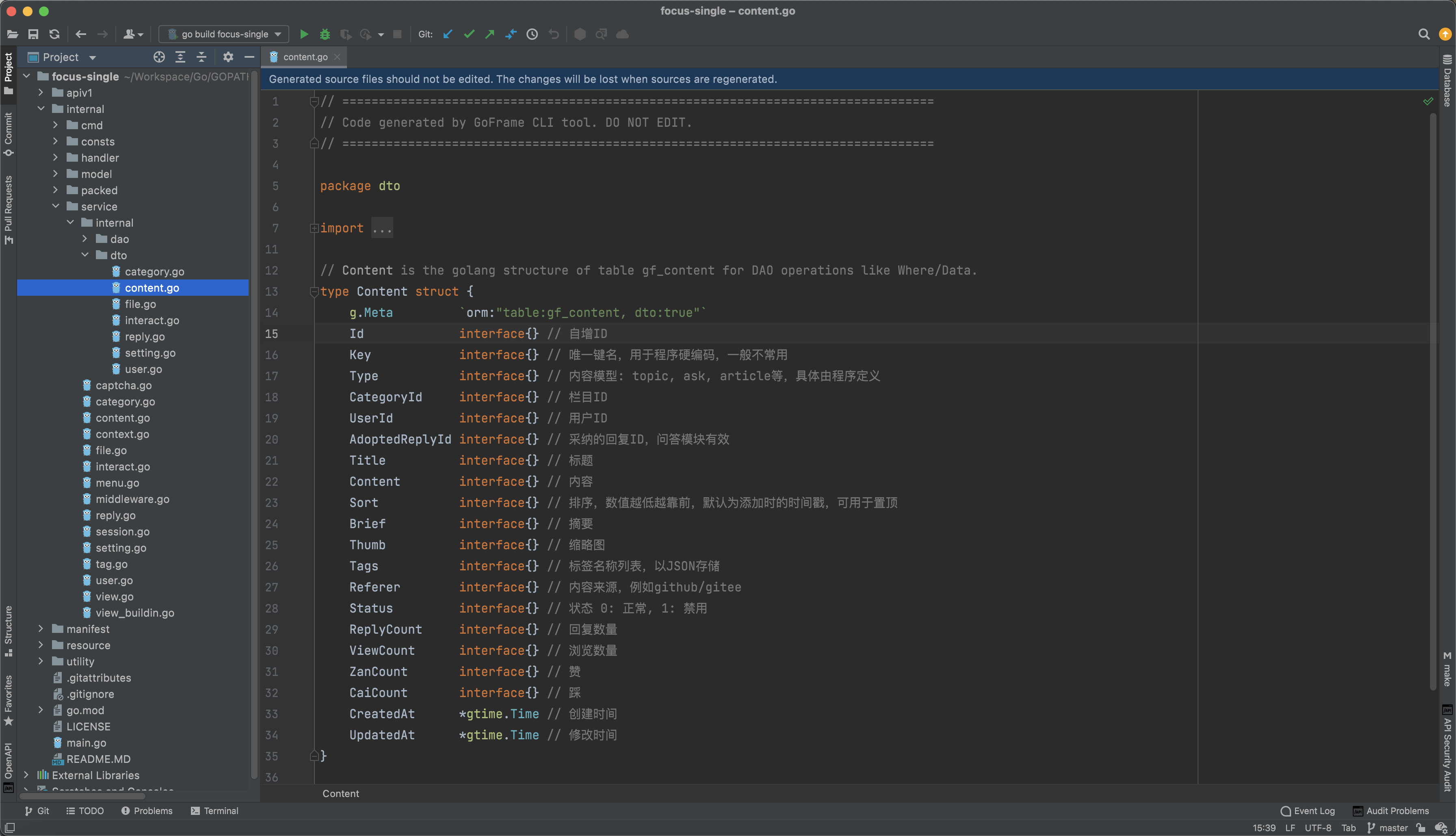In the previous section Code Layering, the concept of "model" was mentioned.
In this section, we will focus on introducing the definition and management of models in GoFrame.
1. Data Model
Data Model, also known as Entity Model, mainly comes from the data structure of the underlying persistent databases, such as MySQL, Redis, MongoDB, Kafka, etc. These data structures are maintained by third-party systems and can be identified through tools which automatically generate corresponding program data model codes. These data model codes are located in the /internal/model/entity directory. Developers do not need to manually maintain data models in the program. According to the GoFrame framework specification, data models are uniformly maintained using CLI tools, and codes are automatically generated.

Example of Data Model
2. Business Model
The business model mainly includes two types: Interface Input/Output Model and Business Input/Output Model.
Interface Input/Output Model
Interface Input/Output Models are used for interface interaction between systems/services, defined in the api interface layer, and can be called by all layers of the project, such as controller, logic, model. However, the api layer is only used for interface interaction with external services, and this model cannot call or reference internal models like model. In the GoFrame framework specification, these input/output model names are named in the format XxxReq and XxxRes.

Example of Interface Input Model
Business Input/Output Model
Business Input/Output Models are used for method call interactions within service modules/components, especially calls between controller->service or service->service. These models are defined in the model layer. In the GoFrame framework specification, these input/output model names are usually in the format XxxInput and XxxOutput.

Example of Business Input Model and Business Output Model
Special Business Model DO
In GoFrame, there is a special business model DO, which is intermediate between business models and data models and is mainly used to simplify DAO data access operations by leveraging the framework's powerful ORM component.

DO is mainly used for DAO data access operations
3. Other Models
There are also internal private models used for module internal calls, such as models defined within each business module in logic, used for internal logic and not exposed to the outside.